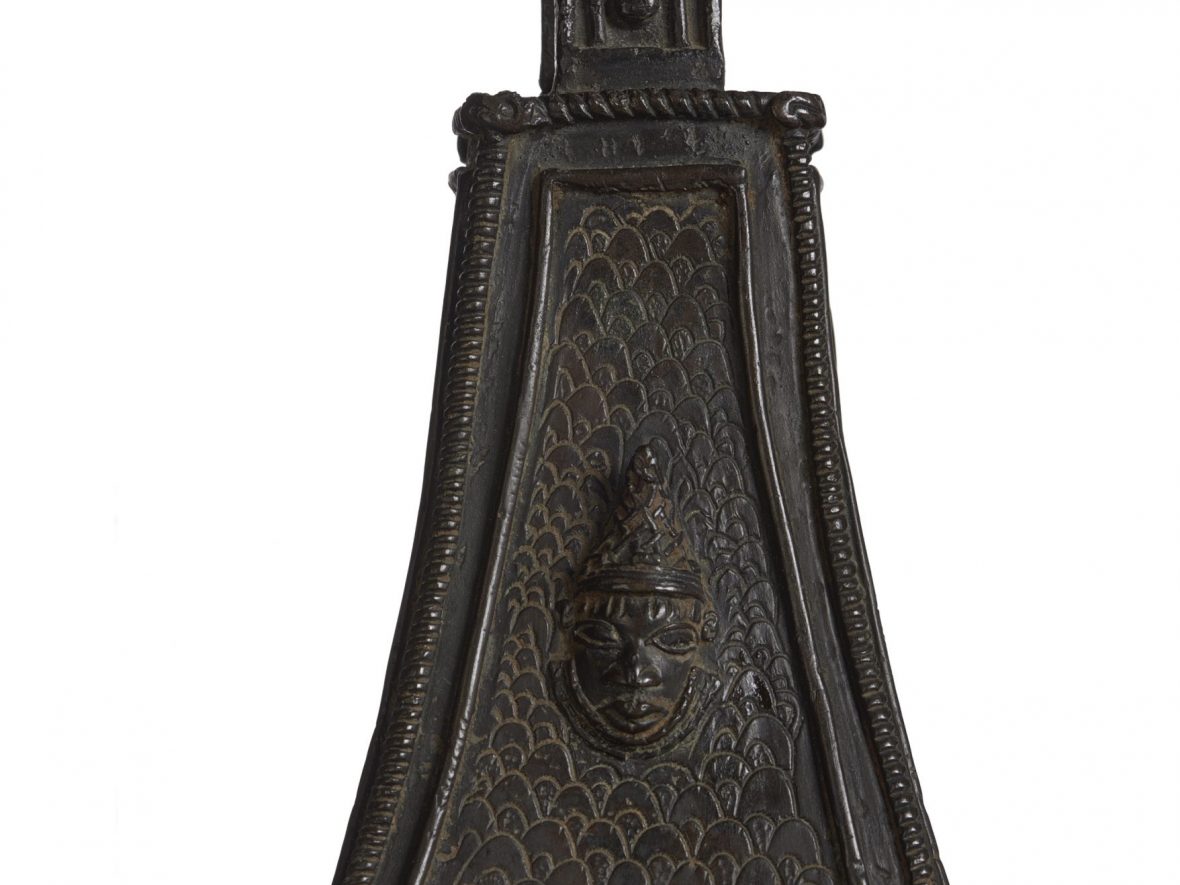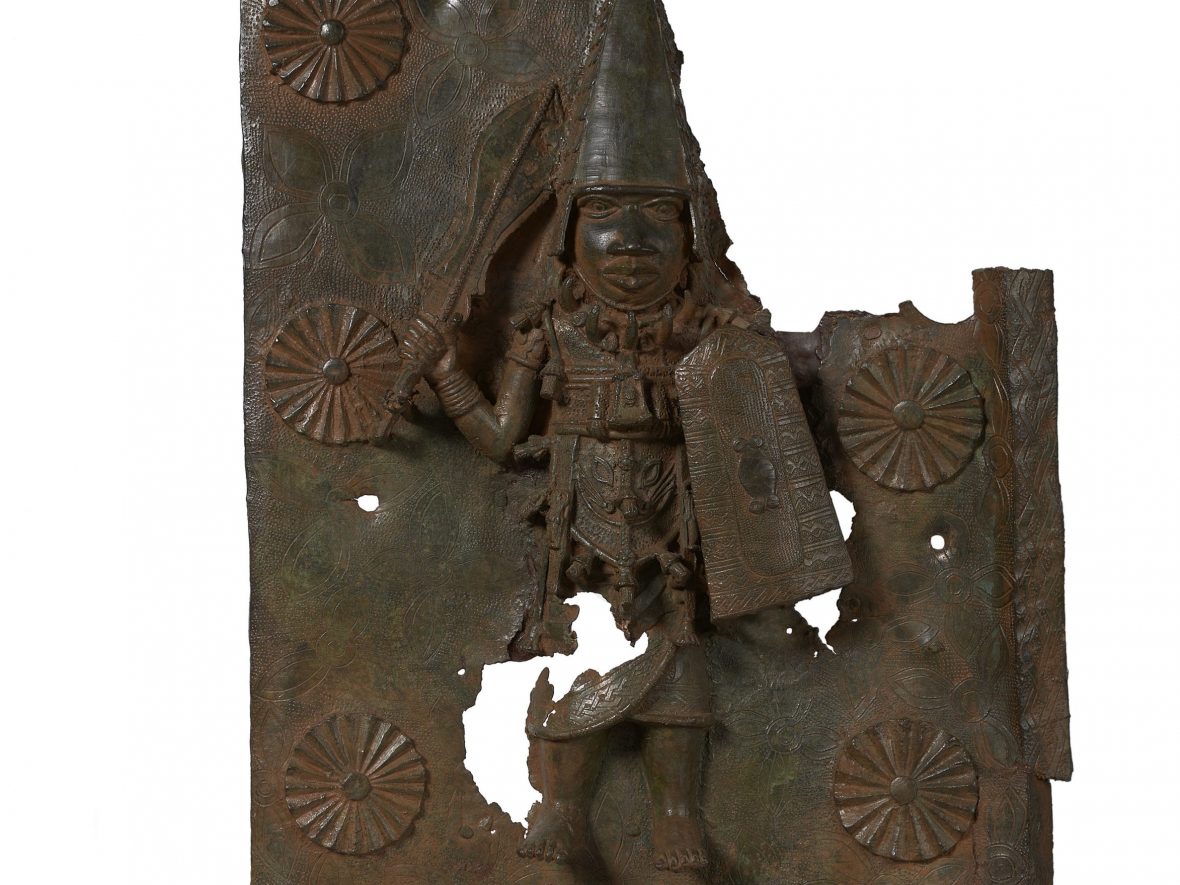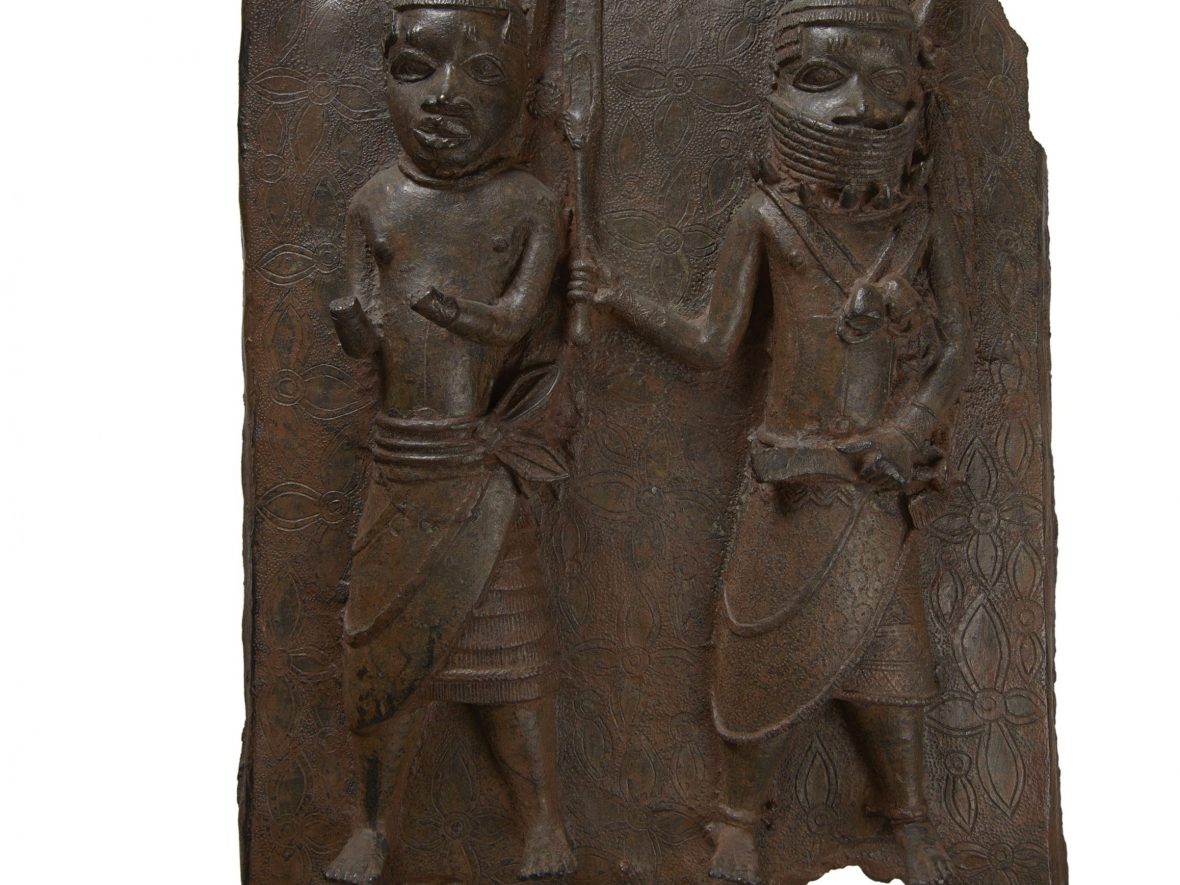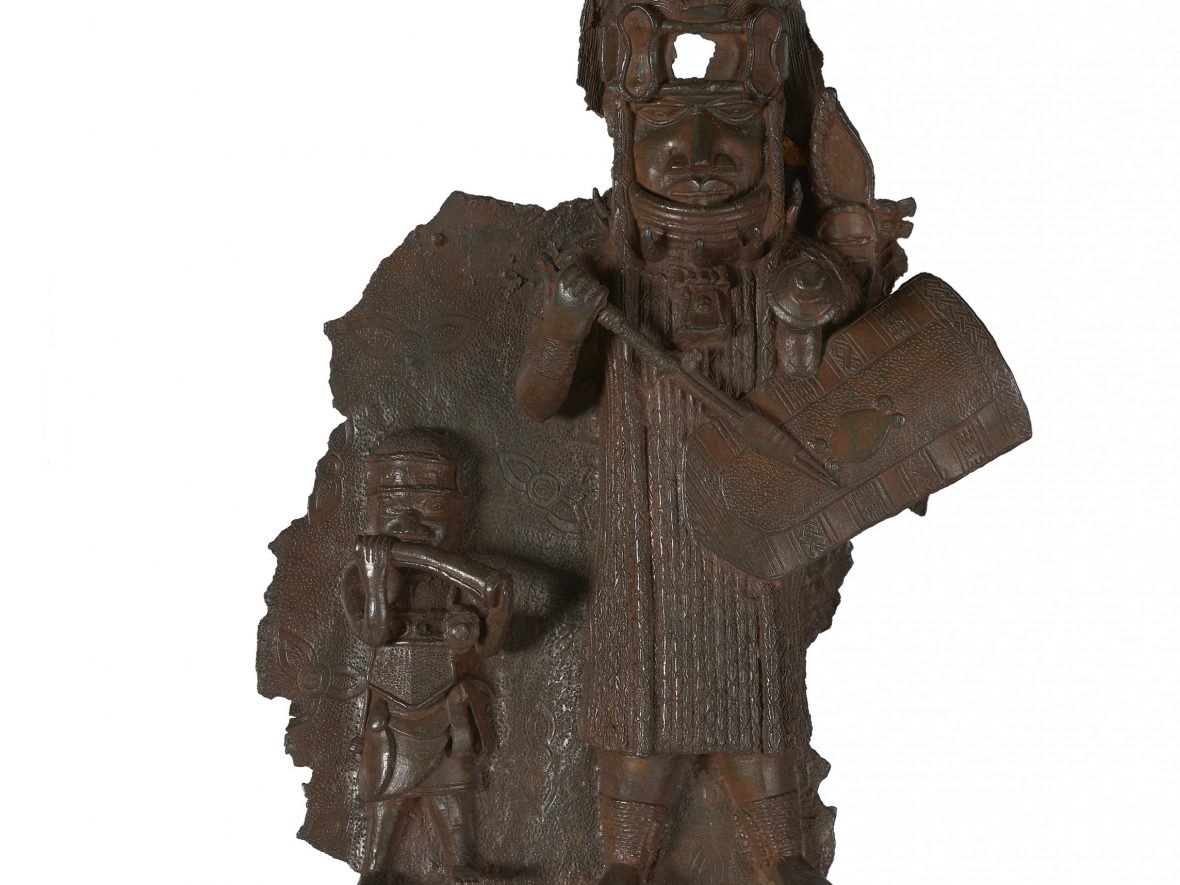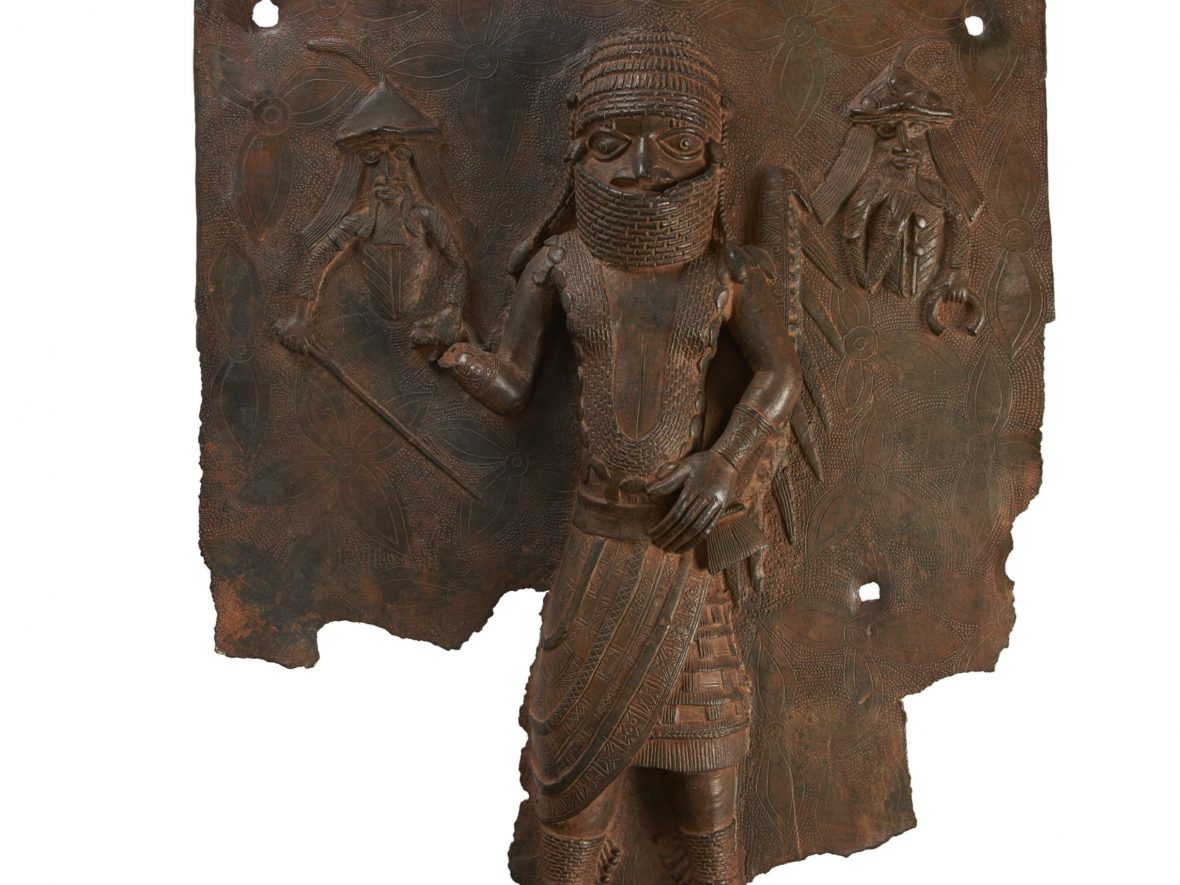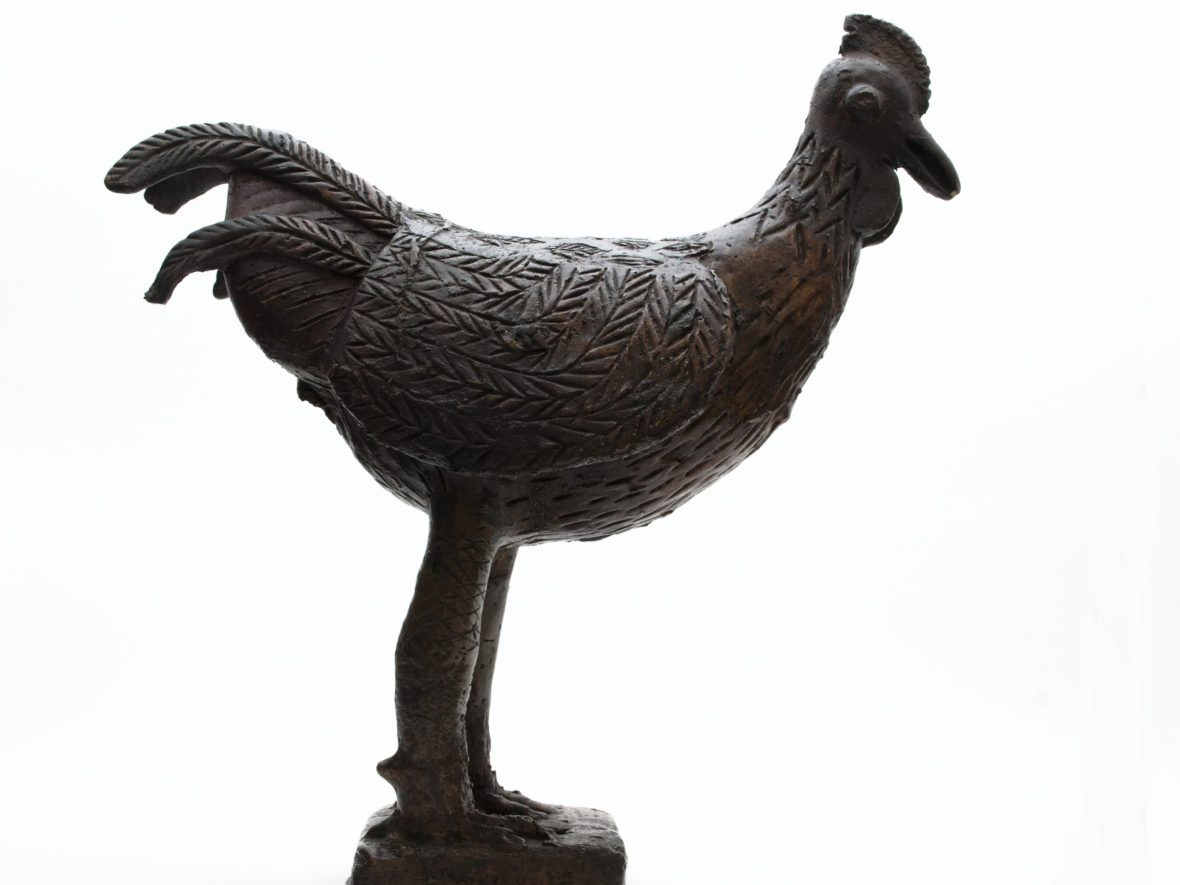Kingdom of Benin
Objects in the Benin display will be removed from view as part of the planned redisplay from Monday 28 October- Friday 29 November. The Africa section of the Gallery may be inaccessible at points during this time. We will contact you if you have a workshop booked during this time that links directly to these topics.
Explore a plaque together
Join Lucy as she talks about a modern plaque, made in Benin City by expert caster John Ihama, in the style of the ancient artefacts.
Gallery Trail
Use this learning resource to explore some of the 500 year old collections from the Kingdom of Benin that are currently displayed at the Horniman.
Using the resource
- Use images of the objects to create a trail through the Museum to find specific objects or places.
- Use images as a stimulus for discussion about the British invasion of Benin City in 1897
- Use object images to encourage independent research, for instance, find out and write down three facts about an object or group of objects. Alternatively, give facts or clues and challenge your pupils to identify mystery objects.
- Take inspiration from the historical artworks, and encourage pupils to draw or model a plaque that tells an important story to them
A note about these objects
Objects 1-3, 5-8 and 10, are some of the 72 objects formerly owned by the Horniman Museum that were forcibly looted from Benin City in 1897 during a British military incursion. These objects were purchased by Frederick Horniman, and were held in the Museum’s collection for over 120 years. After detailed research and consultation, the Horniman returned ownership of these objects to Nigeria in November 2022.
Ownership of these objects has been transferred, and objects 1 and 2 have been returned to Nigeria. The remaining objects are now on loan to the Horniman, and remain on display in the World Gallery.

Clapper bell
Brass plaques (pictures) show us that these bells were also worn around the necks of soldiers. As an army marched into battle, the clanging of their bells and blasting of trumpets would intimidate enemy armies and give soldiers courage. These bells were also rung to signal victory! You can find some other musical instruments from Ancient Benin in our Music Gallery.
These brass bells were worn to make soldiers feel brave; what helps you to feel brave?
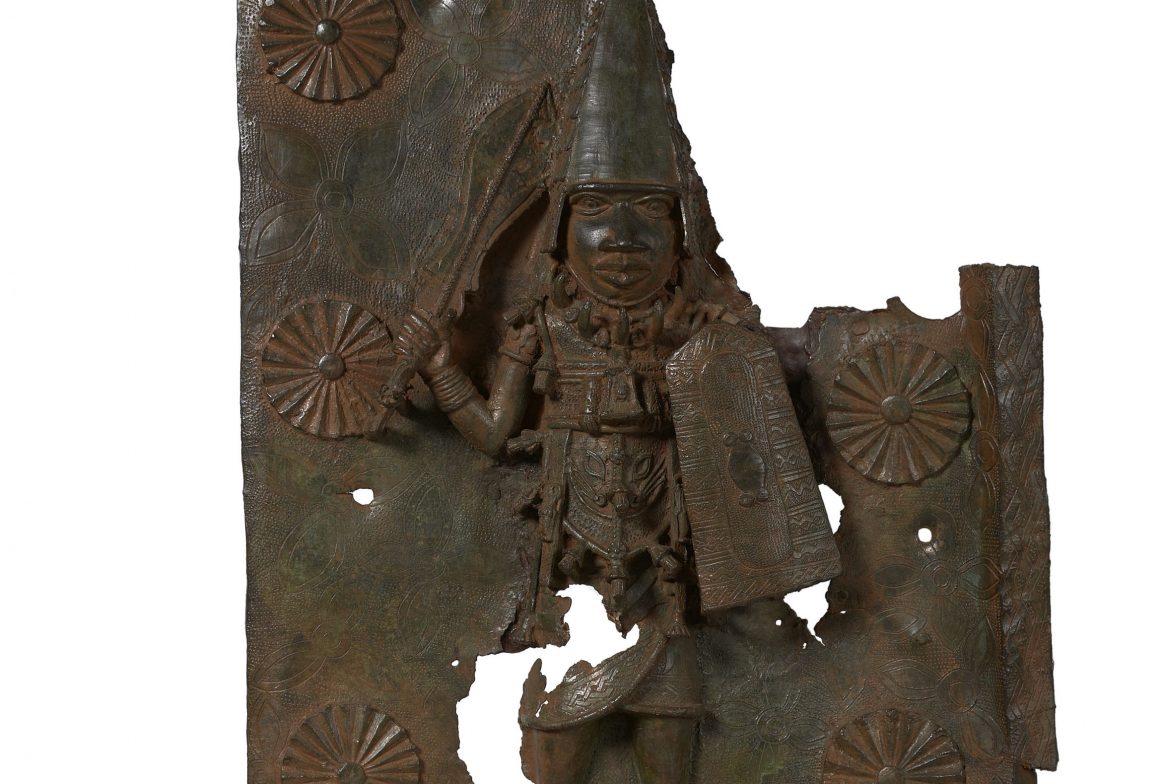
Brass plaque of Agban, the Ezomo
Legend has it that, whilst telling Oba Orhogbua of a long-fought victory, Ezomo Agban was interrupted by a loud thunderclap. Agban was so angry that he declared war on the sky, building then setting fire to a wooden tower that was two miles high until the sky admitted defeat! Shrines were built to Agban in places where the burning tower fell; they are still visited by Benin chiefs today!
As there was no written language in Benin, plaques are full of symbols with extra meaning. Agban is surrounded by water hyacinths, a symbol of the water god, Olokun, and suggest that he has the support of this powerful god.
How do Ezomo Agban’s clothes show us that he was an important person?
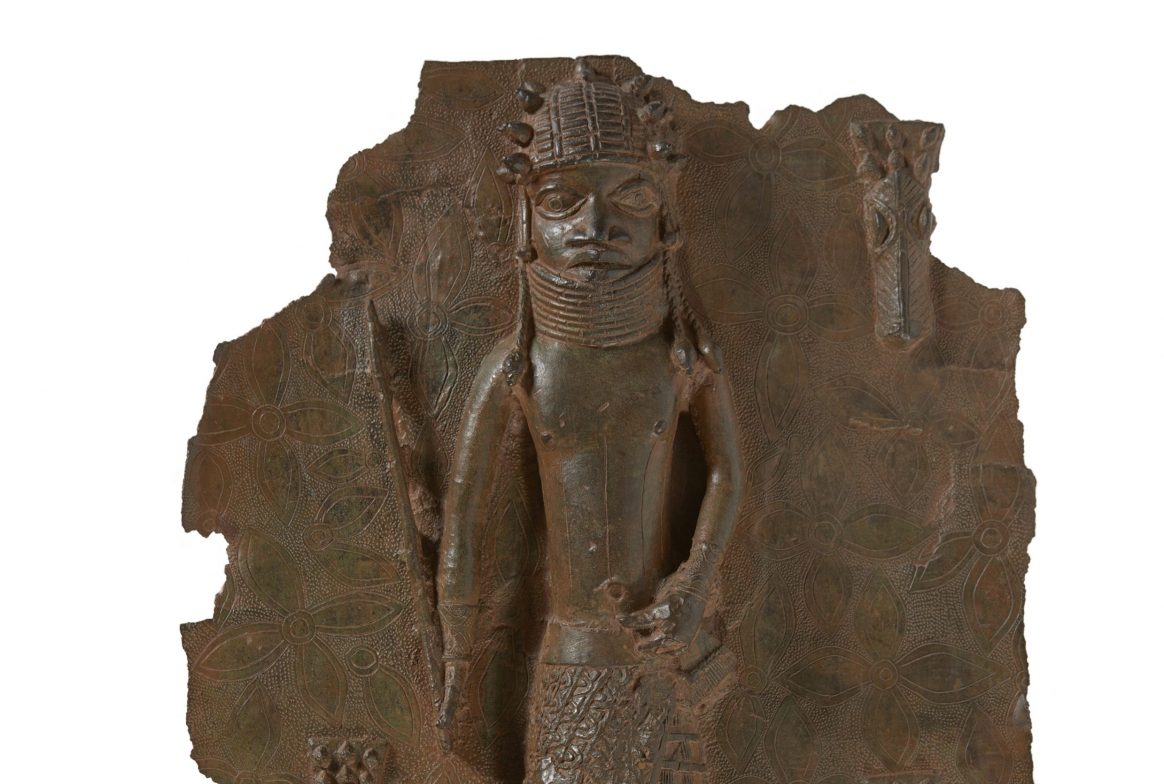
Brass plaque of Oba Orhogbua
Here, the Oba is wearing a collar and headdress made of expensive coral beads. People believed that an Oba had taken coral from Olokun, god of the waters, after defeating him in a wrestling match. Consequently, coral was thought to hold mystical, protective powers and could only be worn by royals and officials. Crocodiles were thought to be Olokun’s policemen of the water; here they surround and protect the Oba, showing his power.
Which other animals held special significance in the Benin Kingdom? Why?
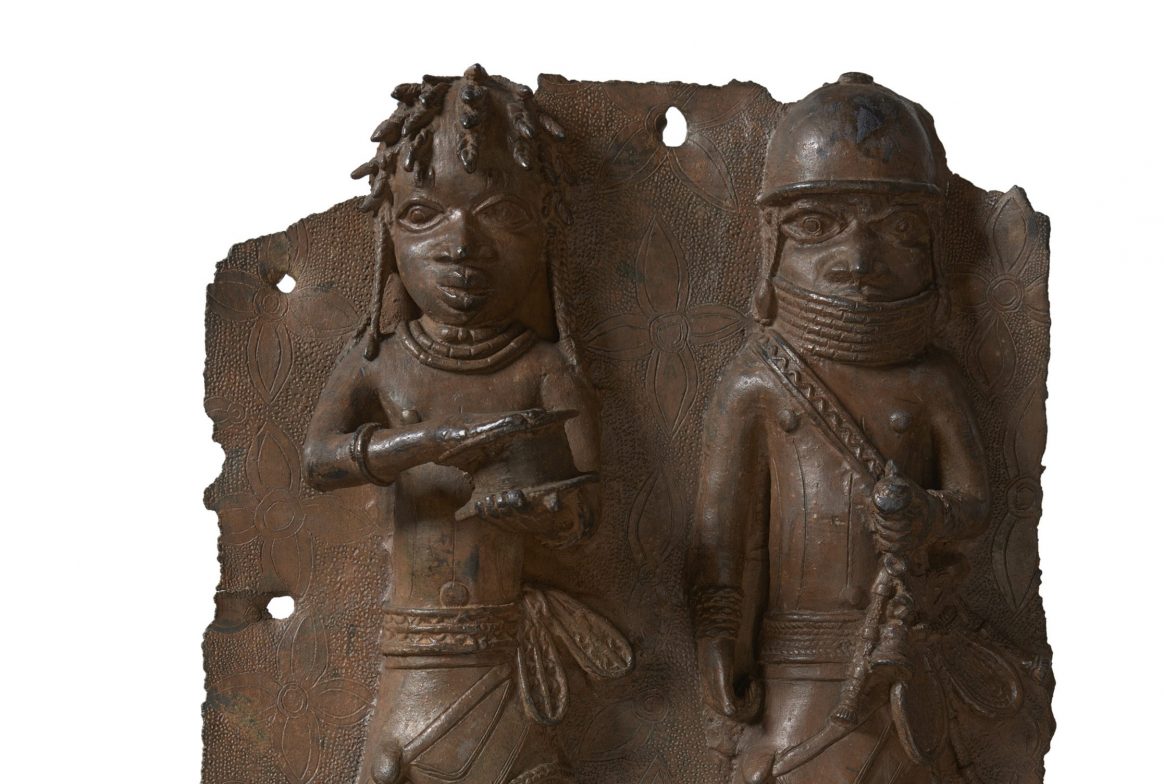
Brass plaque of Oko’Oba: the Oba’s emissary
The man on the right is an important war chief. We know this because he is wearing a helmet, coral jewellery, and a scabbard (sword case). On the left is a royal army priest who can be identified by his braided hairstyle and the celt stone tool tucked into a strap around his leg.
The priest is holding a cylindrical box called an ekpokin which would have been presented to the Oba as proof of a successful mission. The ekpokin probably contains soil from a captured land or the head of someone they defeated.
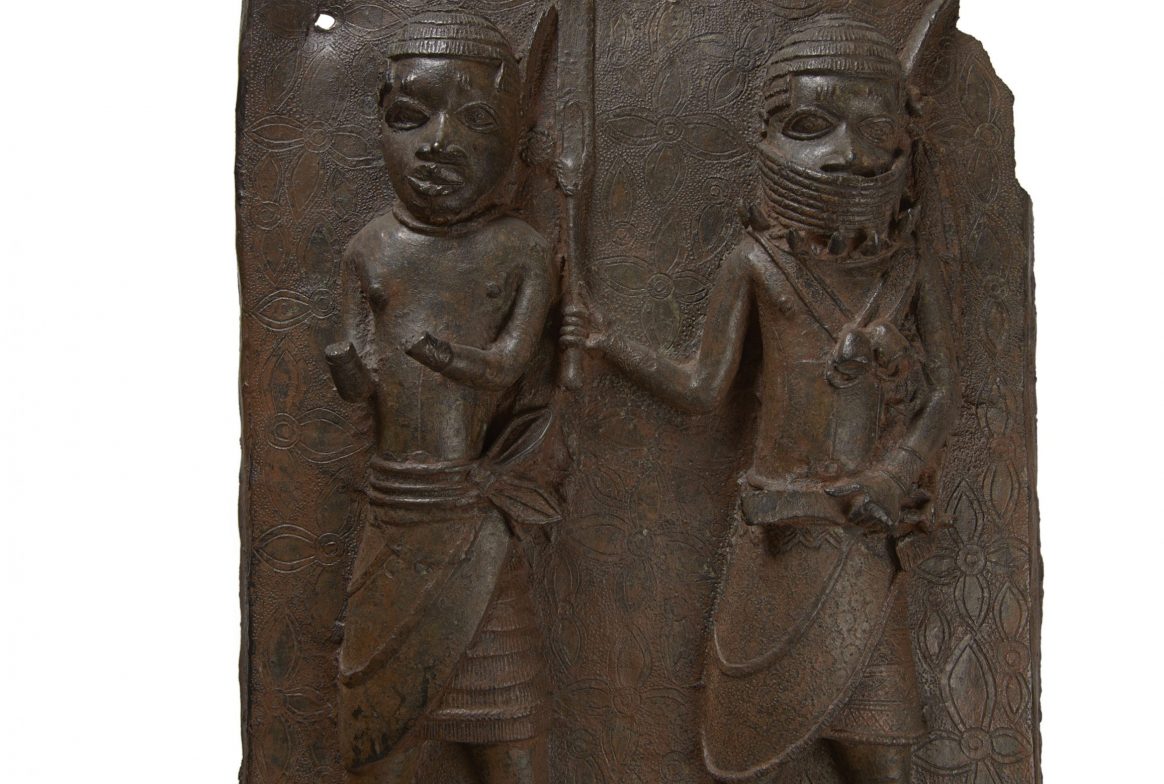
Brass plaque of Ohen Okhuaihe N’Ogheghe, chief priest of the river god
The two men are bringing the news of a victory over a group of people who had been fighting against the Oba. The Ohen Okhuaihe carries a sword that once belonged to one of the rebels. The sword has been broken to show that the rebel’s powers have been broken. The Civil Commissioner is holding out his hands and was probably carrying an ekpokin (gift box) that has broken off the plaque.
Benin brass plaques only show part of an event or story; who is missing from this plaque?
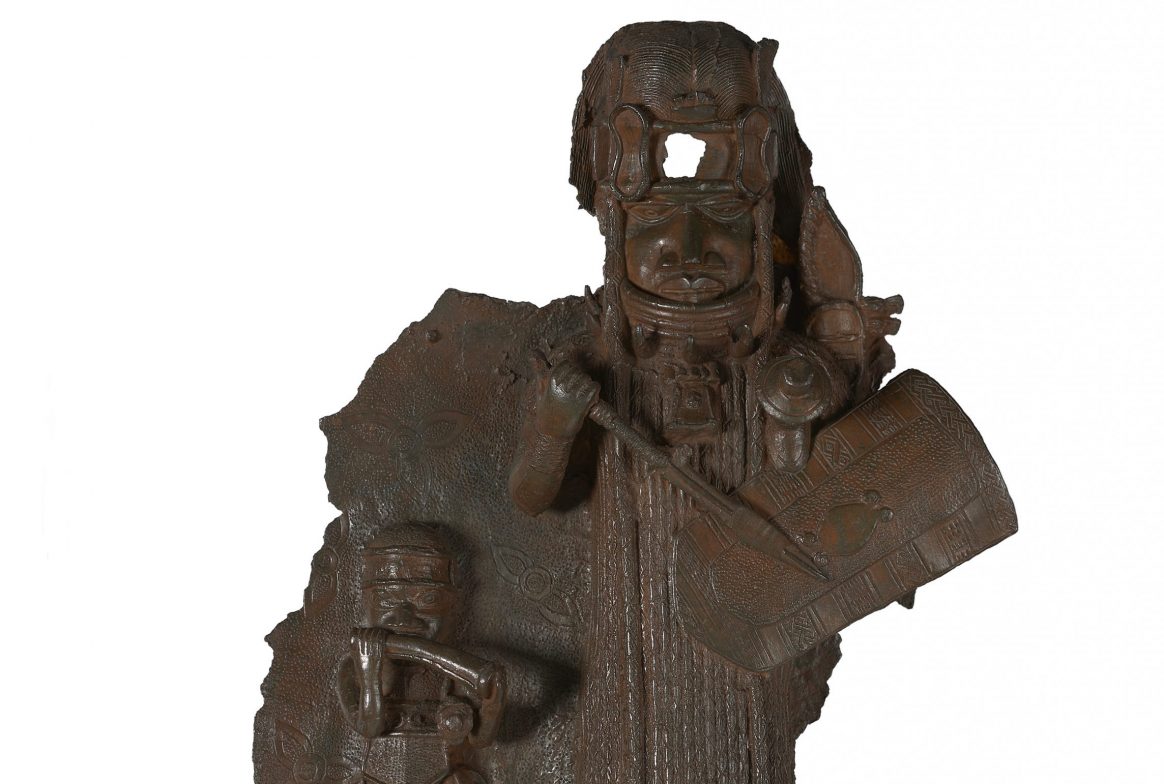
Brass plaque of Ekpenede, Iyase of Benin
Iyase Ekpenede is carrying several weapons and is wearing both protective military clothes and an elaborate headdress that shows his importance. He also has a brass bell around his neck for protection.
The smaller figure is probably the Iyase’s own horn-blower, playing a victory song on his ivory side-blown horn. Brass plaques were made to record good things that happened during an Oba’s reign, so we know that Iyase Ekpenede was successful. However, once an Iyase led an army out of Benin, he could never return- even if the army won.
Why is the horn-blower on this plaque so much smaller than the Iyase?

Brass plaque of Ohen N’Ugbor N’ome Eto Ene, the elusive priest
Ohen N’Ugbor, priest of Ugbor village, bet his life that Oba Ewuare couldn’t answer his riddles. The Oba couldn’t, so angrily sent a beautiful woman to trick the priest into giving her the answers. The next day, the Oba surprised the priest by answering every riddle correctly before ordering his execution.
Luckily, the priest’s guards fell asleep and he managed to escape. Embarrassed they’d let him go, the guards convinced the Oba they’d killed the priest by smearing chicken blood on their swords. Much to the Oba’s surprise, the priest later returned alive and well! His hair was tied in bundles, each with a special meaning that reminded the Oba to be more careful.
Why might an Oba want a plaque that tells this story?
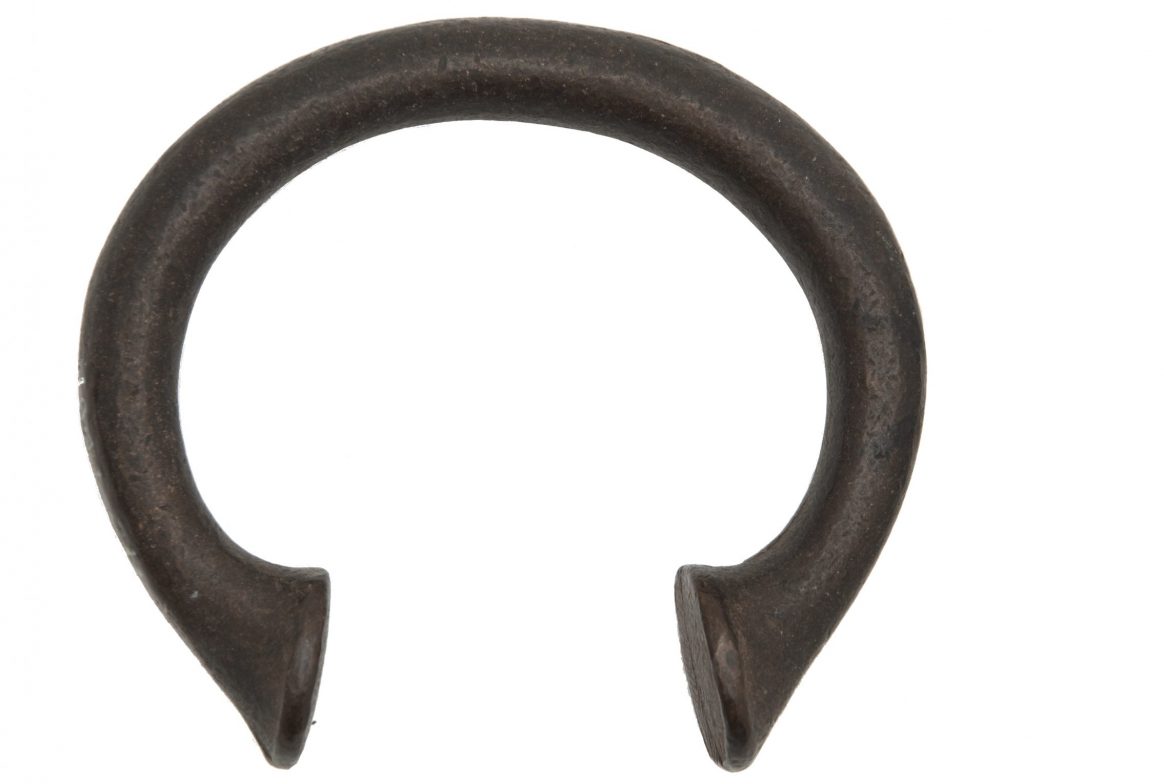
Manilla
These trade prices were recorded in 1522:
1 brass manilla = 3 chickens worth of cowrie shells (also used as currency)
1 brass manilla = 454grams of ivory
Brass manillas could be made in many different sizes and their quality would be tested by ‘ringing’ two together and listening to the sound that they made. They were highly prized by the people of Benin because they could be melted down and poured into clay moulds to make statues and plaques as part of ‘lost wax’ manufacturing process (click to see video).
Many cultures have used items other than coins and notes for money – which ones do you know?
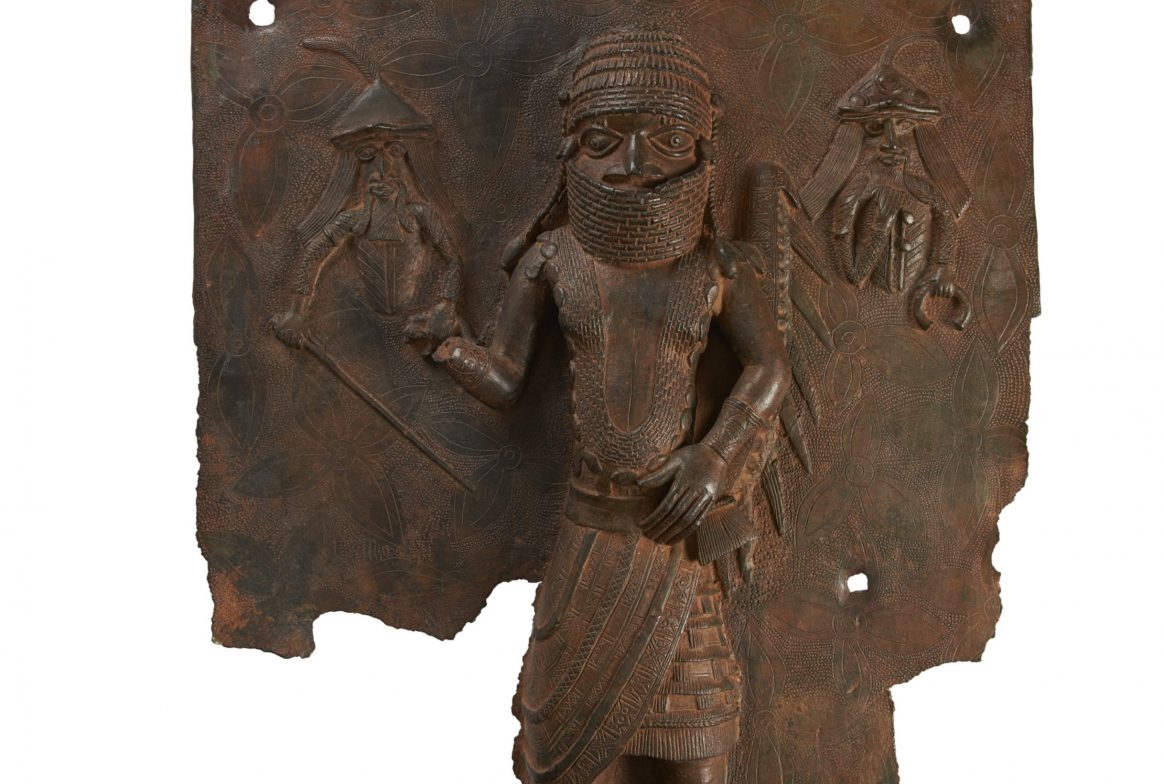
Brass plaque of Uwangue Osokhirikpa, the flamboyant and proud one
In this plaque, Chief Uwangue is acting as the Oba’s representative to make trade links with the Portuguese. The chief is holding out the right hand of friendship to one trader, and is connected to the other by the symbol of a royal fish.
How do your clothes tell people about who you are?
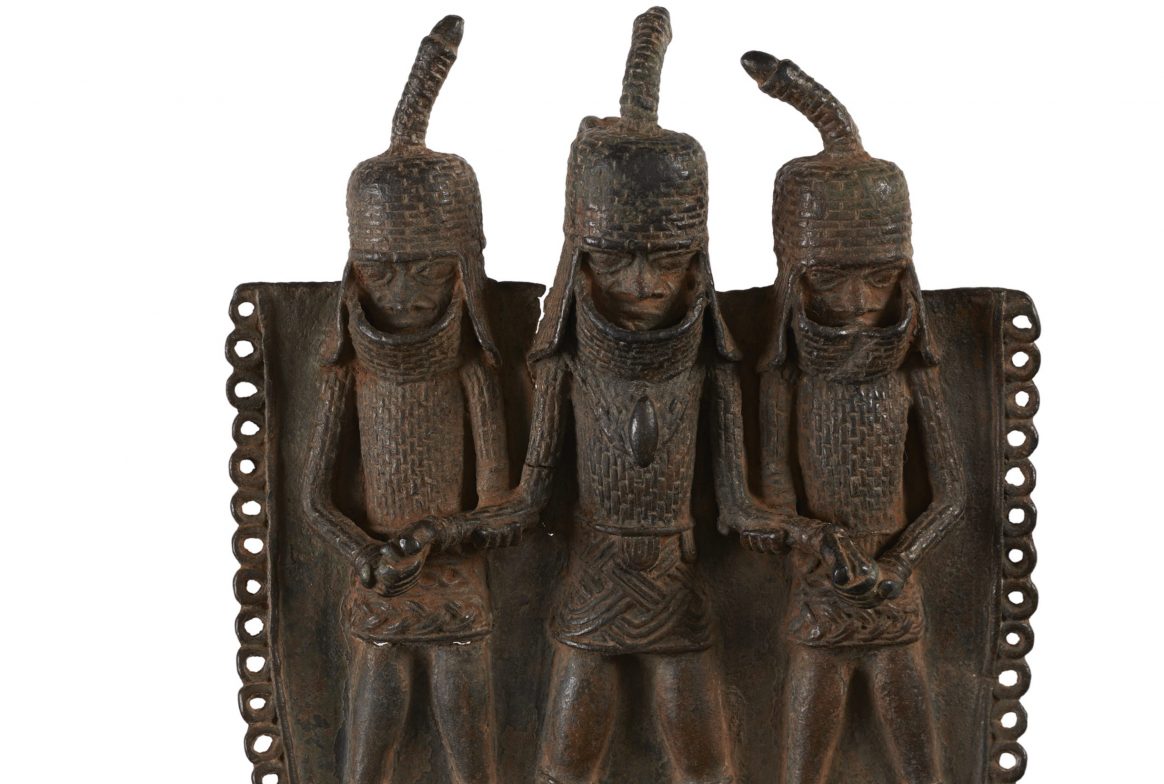
Brass neck ornament
Each warrior is standing above a frog. Frogs are amphibians and can live both on land and in water, so in the Benin Kingdom they symbolised the ability to move between the world of people (represented by land) and the world of the gods or spirits (represented by water).
Frogs were also seen as important as they swim with their heads out of the water. The head was seen as the centre of power, and the source of wisdom and judgement, so they also symbolise good leadership.
Many different cultures think animals are important or powerful – which do you know about?

Brass figure of a cockerel
The Oba’s mother was an important figure in the royal court and a powerful advisor. However, she was also thought to have strong, magical powers that could be used to influence and even control the Oba. To stop this from happening, the Iyoba was not allowed to see her son after he became the Oba. Figures like this would have reminded the Oba of his mother.
Which objects remind you of special people or happy memories?
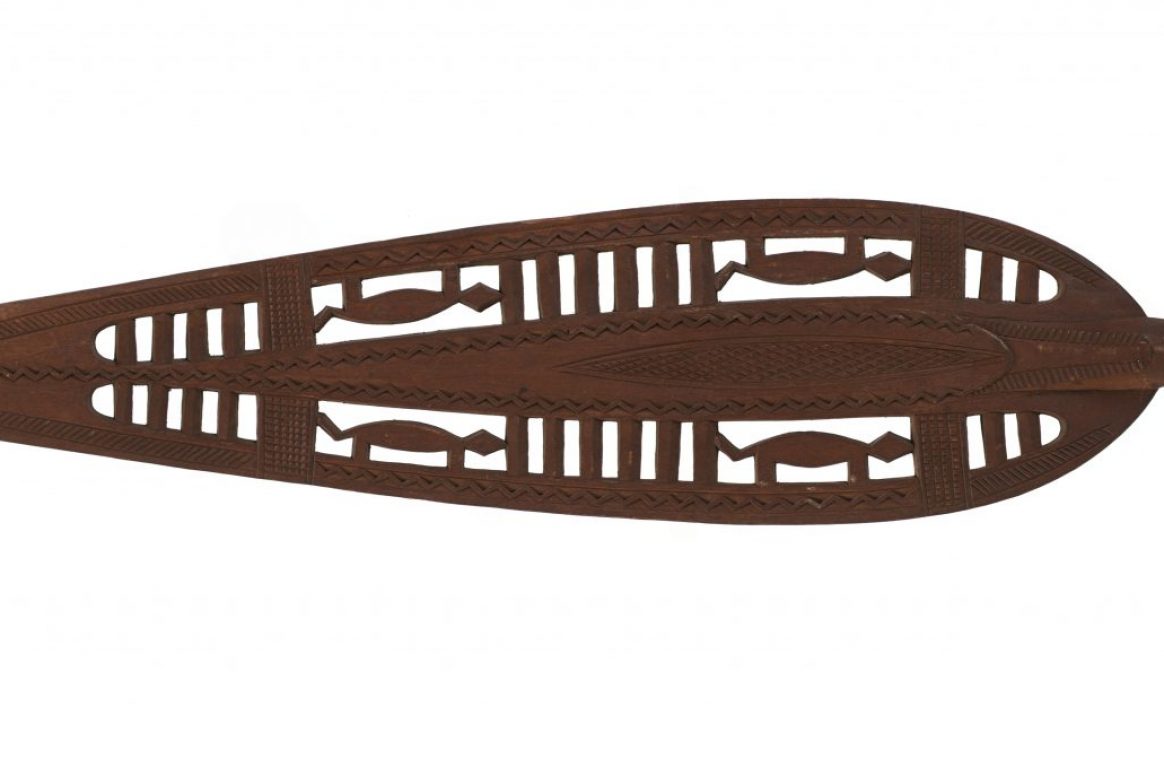
Ceremonial paddle
The middle of this wooden, teardrop-shaped paddle has been skilfully carved out into the shapes of animals and thin lines. The handle has also been carved to look like everlasting, interlocking chains.
Though the Oba may have owned some wooden objects, royal objects were usually made from everlasting materials like brass. Wood was more commonly used to make objects for the ordinary people of Benin. Inexpensive materials were seen as part of the natural cycle of growth and decay that happens over time.
This object would have been used in ceremonies, not to paddle a boat. What clues tell you this?

Ivory staff of office
The figure at the top of this staff is wearing coral beads to show the executioner’s importance and is carrying a sword in one hand and a bell, rung to announce an execution, with the other.
This staff has been carefully carved from ivory, a piece of elephant tusk. In the Kingdom of Benin ivory was a royal material because it is long lasting and was thought to hold the strength and power of the elephant. Elephants were known to live a long time and were seen as strong, wise leaders- qualities that the Oba saw in himself. You can see an elephant skulls (and tusks) in our Natural History Gallery.
Today it is illegal to trade in ivory as many species of elephant face extinction. Museums don’t kill animals for their ivory, but do display ivory objects from animals that were killed in the past. Do you think museums should display ivory?
